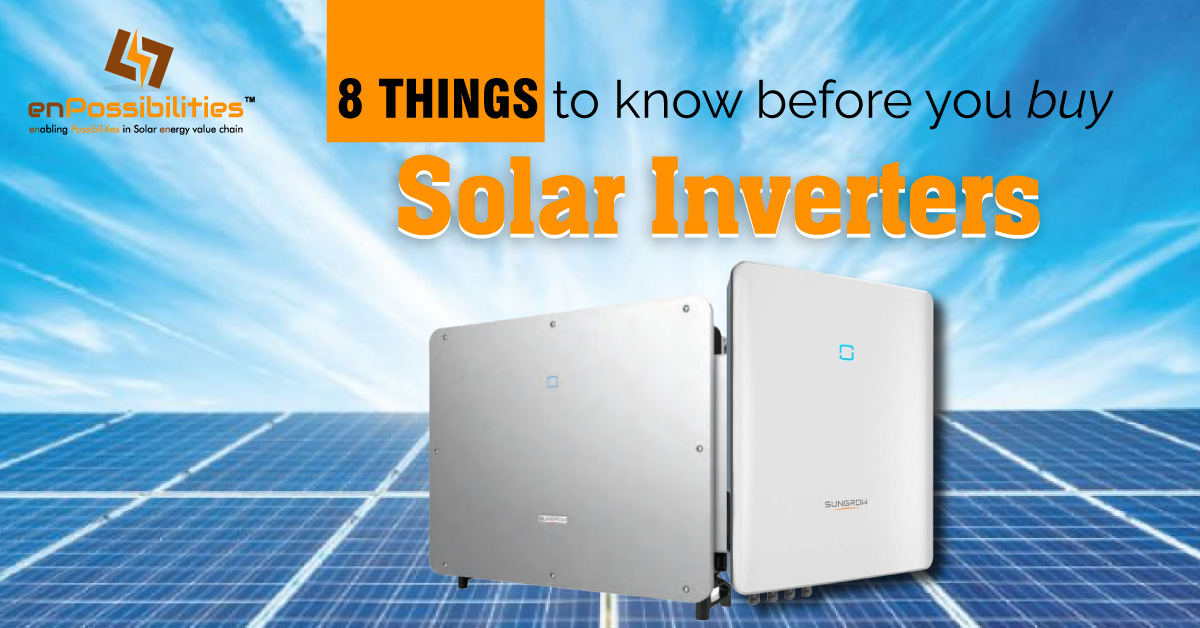A solar inverter is an integral part of solar power systems because it changes the Direct Current (DC) that the PV panels make into Alternating Current (AC). If you’re wondering why these matters, consider that household electronics like televisions, geysers, fans, and air conditioners can’t operate without AC. As a result, solar inverters are a crucial component of renewable energy installations.
But there are many different solar inverter set in India now, which makes it hard to find the right one. But don’t worry, we’re here to help. Here’s what you need to know before you buy a solar inverter:
The output voltage is stable
In photovoltaic systems, the electricity made by solar cells is first stored in batteries. Then, solar inverters change the energy from 220V or 380V DC to 220V or 380V AC. BA storage battery’s output voltage may vary greatly depending on how it is charged and drained. A 12V storage battery, for instance, may have a voltage anywhere from 10.8V to 14.4V. (above that temperature, storage batteries risk being harmed).
When the input voltage changes within this range, a qualified solar inverter’s steady-state output voltage change should be at most 5% of the rated value. When the load changes quickly, the output voltage should not change by more than 10% of the rated value.
Changes in the waveform of the output voltage
The maximum waveform distortion (or harmonic content) permitted for sine wave inverters should be specified in writing. As a general rule, the overall waveform distortion of the output voltage should be less than 5%; this is the utilised metric. High-order harmonic current from the inverter will lead to eddy current and other losses in the inductive load. The inverter’s severe waveform distortion will lead to the load components overheating, which is dangerous for the electrical system and wasteful of energy.
Frequency of output
For loads with motors, like washing machines and refrigerators, the best frequency is 50Hz. If the frequency is too high or too low, the equipment will heat up, and the system will not work as well or last as long. Solar inverters should have a reasonably stable output frequency, usually 50Hz, and the deviation should be less than 1% when working usually.
Power factor of the load
Power inverters can handle either an inductive load or a capacitive load. A sine wave inverter’s load power factor ranges from 0.7 to 0.9, with 0.9 being the rated value. The capacity of the power inverter will need to be increased if the inverter’s power factor is low and the load power remains constant. On the one hand, the price will go up. On the other hand, the photovoltaic system’s AC circuit’s apparent power and loop current will go up. This will increase the system’s losses and make the system less efficient.
How well do solar inverters work
The efficiency of the best solar inverters in India is the ratio of the power output to the power input under specific working conditions. This ratio is given as a percentage. Generally, a photovoltaic inverter’s nominal efficiency is under 80% of pure resistance load. For this reason, it is crucial to enhance the efficiency of photovoltaic solar inverters, reduce the overall price of the system, and boost its cost performance. Most commercially available inverters today boast 80% to 95% nominal efficiencies.
The minimum efficiency for low-power inverters is 85%. Not only should high-efficiency inverters be selected during the actual design of a photovoltaic system, but the system’s load should also be configured in a way that allows it to operate as close as feasible to its best efficiency.
Amount of current rated (or rated output capacity)
The rated output current is the solar inverter’s rated output current within the range of load power factor. Some solar inverters tell you how much power they can put out in VA or KVA. When the output power factor is 1, the rated output capacity of the inverter is equal to the product of the rated output voltage and the rated output current (i.e. the pure resistance load).
Measures for safety
A solar inverter that works well should also have full protective functions or measures to handle a wide range of out-of-the-ordinary situations and keep the inverter and other parts of the system from getting damaged.
Noise
In power and electronic devices, noise is made by transformers, inductors, filters, electromagnetic switches, and fans. Solar inverters shouldn’t create more than 80dB of noise when working usually, and small-scale inverters shouldn’t make more than 65dB of noise.
Even though this covers the most important things to consider when buying a solar inverter, choosing the right brand is also very important. You should always select well-known, reliable solar inverter brands in India that are known for making high-quality products that work well. You can take help from enPossibilities.

